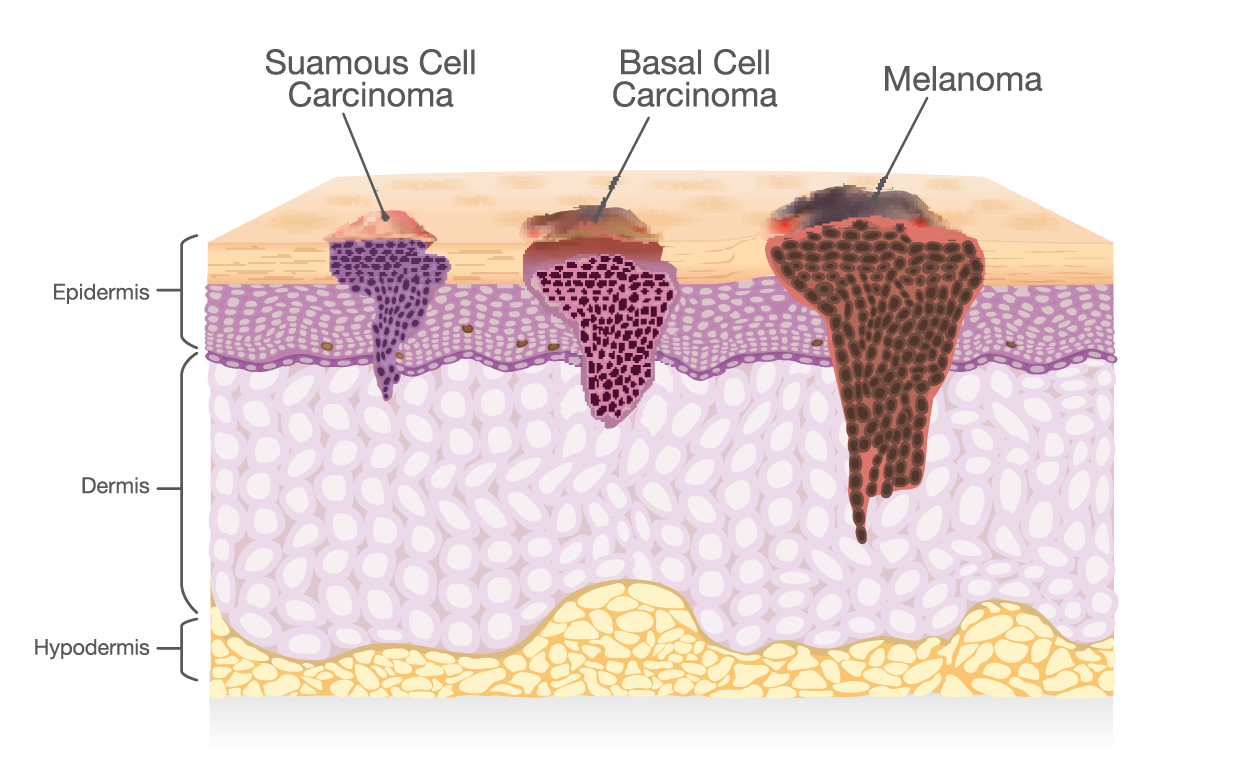Skin cancer
Incidence
Two in three Australians will be diagnosed with skin cancer during their lifetime. Skin cancer is the most common type of cancer accounting for 80% of all newly diagnosed cancers in Australia. But with early diagnosis and proper treatment it is also the most curable.
Causes
Ultraviolet radiation (UVR) from the sun is the main cause of skin cancer. Artificial sources of UVR, such as sunlamps and tanning booths, can also cause skin cancer. Australia receives high amounts of UVR and this accounts for its high rate of skin cancer. Skin cancer is related to lifetime exposure to UVR. Most skin cancer appears later in life, but the sun's damaging effects begin at an early age.
Prevention
Prevention is better than cure. Sun protection should start in childhood to prevent skin cancer later in life. It is important to note that on a moderately cloudy day, the risk of sunburn is almost the same as a cloudless day. Even if you are in the shade, sun can reflect off other surfaces to cause sunburn. Aside from protection, early detection is the most important factor in reducing the morbidity and mortality from skin cancer.
Types
The three types of skin cancer are basal cell carcinoma (BCC), squamous cell carcinoma (SCC) and malignant melanoma (MM).

BCC and SCC are sometimes together called keratinocyte carcinoma (previously referred to as non melanoma skin cancer). These can occur anywhere on the skin (although mainly on exposed sites such as head, neck and arms) and have a varied appearance, such as a small, smooth, shiny, pale or waxy lump, sore, ulcer or scaly patch of skin which is new, grows, or changes in shape or colour, or that does not heal within a few weeks. Sometimes, the lump bleeds or develops a crust.
BCC is the most common skin cancer accounting for more than 75% of all skin cancers in Australia. It is a slow growing cancer that seldom spreads to other parts of the body, and is easily treated if found early. SCC is less common representing 20% of Australian skin cancers. SCC rarely spread, but it does so more often than BCC. It can be lethal if not treated early.
Melanoma
Melanoma (MM) is the most dangerous type of skin cancer, and the most common cancer cause of death in young Australians under 40. It occurs when melanocytes (pigment cells of the skin) become malignant. MM can occur on any part of the skin. In men, it is most often found on the trunk, and in women, most often on the legs. The chance of developing MM increases with age, but it affects people of all age groups.
MM can be cured if it is diagnosed and treated at an early stage. However, if detected late, cancer cells may grow deeper and potentially spread (or metastasise) to other parts of the body. MM is a significant cause of morbidity and mortality in Australia. The first sign of a MM is a change in the size, shape or colour in an existing mole or the appearance of a new mole.

